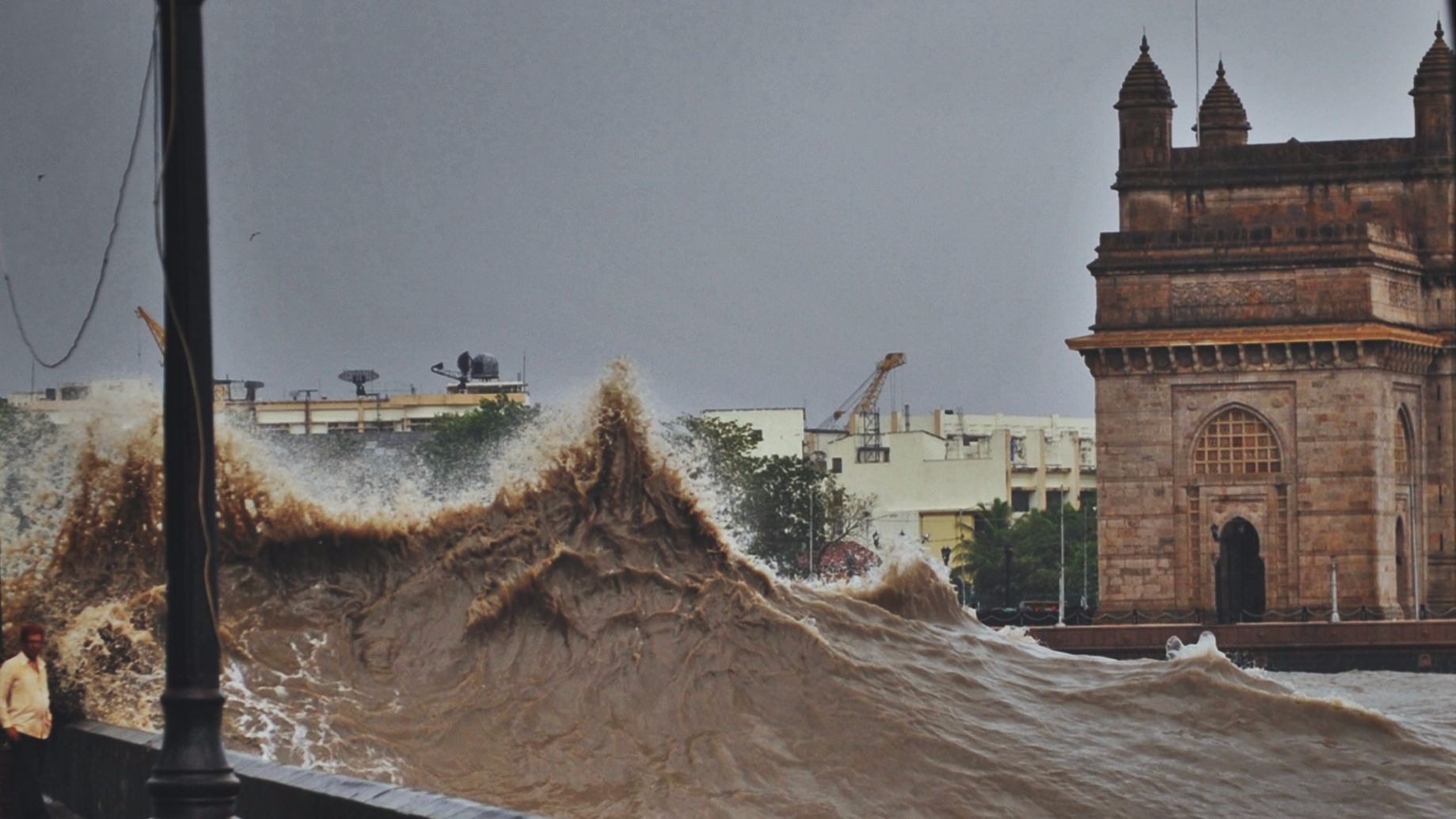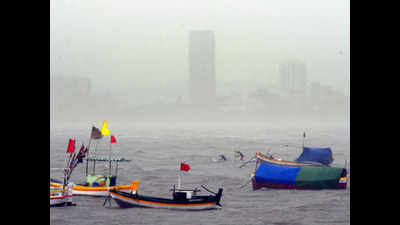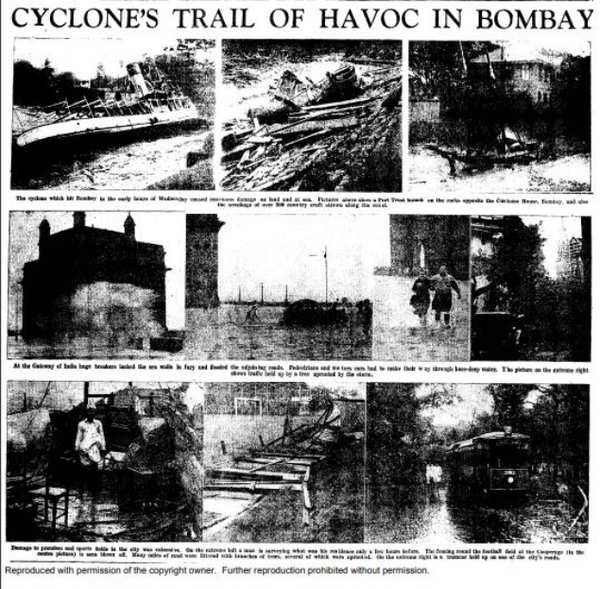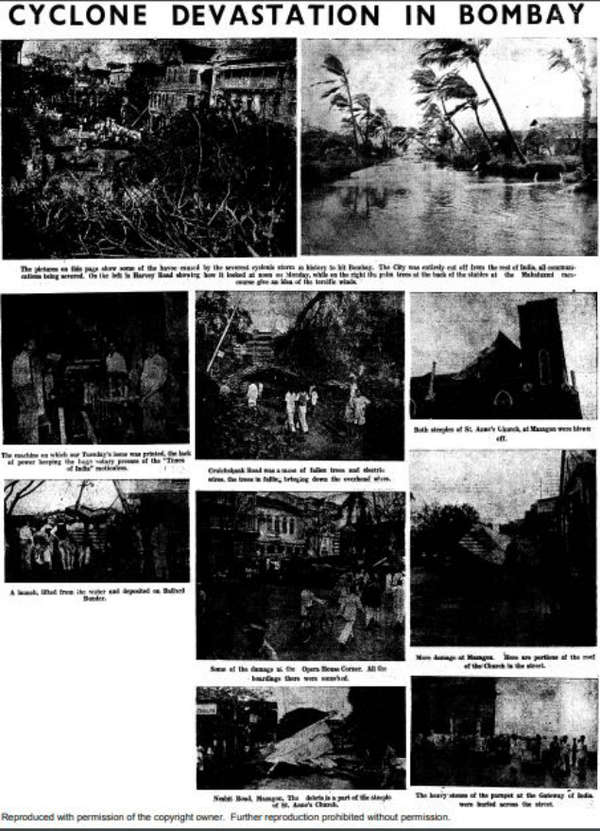x



The Great Cyclone That Hit Bombay In 1948 – 2 Prints
cyclones
Trending

Bombay's tryst with cyclones
Back
in November 1940, when cyclones didn't have names, the Arabian Sea
threw an unprecedented, untimely night-long tantrum that cost the city
more than Rs 25 lakh. In the aftermath, bodies floated at Apollo Bunder,
Colaba, Mazgaon docks and other sea faces even as piles of planks,
broken masts and other pieces of timber turned the harbour from Colaba
to Sewri into one long graveyard of ships.
Read More
<p>Cyclone
Nisarga made landfall in Raigad district, south of Mumbai, with wind
speeds of up to 120kmph on Wednesday, after thousands of people were
evacuated in Mumbai, coastal Maharashtra and south
Gujarat.<br></p>

Wreckage from cargoes carried by around 300 "country craft"--plying between Bombay, Malabar and Kathiawar--littered Colaba, Ballard Bunder, Mazgaon Dock apart from fishing villages in Versova, Danda and Thana.About 100 lives, chiefly crew and owners of ships and boats, were feared lost in this cyclone and a 1000-ton Norwegian steamer called 'Marly'--which left Bombay with a cargo for the Malabar coast--vanished in this tragedy. Stout-hearted seafaring men from Malabar, Kathiawar and Konkan coasts were stranded in the city, desolate and anxious. All that most of them had on landing were their loincloths.
Among the survivors was an eight-year-old boy who braved the waves for about seven hours, clinging to a plank. He had been onboard a barge that brought timber and bamboos from Calicut for a local merchant in Bombay.
Reports indicated that Colaba and Ratnagiri districts had suffered less damage than Thane and the suburbs of the city. Collectors of the various districts affected by the disaster had been authorized to spend upto Rs 50,000 for immediate relief to those rendered destitute.

On the next such furious visit on September 11, 1742, the storm would force all the ships in the harbour from their anchors. Royal ships called Somerset and Salisbury, were damaged, a large vessel of a Muslim owner ran aground and several small guard houses were blown down. Then, on June 15, 1837, 400 houses in the town were destroyed and the roofs of the terraces in the Fort area were carried away and "were seen floating along on the wind as if they had been but mere Pullicut handkerchiefs," states a report. Out of nearly 50 vessels in harbour, scarcely more than six were to be found untouched by the winds.
In his book 'Shells from the sands of Bombay', D E Wacha, writes about a storm he witnessed in the city as a kid of ten years in November, 1854. Emerging from his house into East Rampart Row, now known as Mint Road, he saw acres of bodies of the drowned brought to the shore. "Time hallowed banyan trees were uprooted and the entire road was full of scattered leaves and trunks and barks. West Rampart Row and Esplanade road were one vast area of fallen trees, which floated on sheets of water. Fallen windows, portions of back walls and so on intermingled while it was afterwards reported that the terraces had been blown away and fallen elsewhere. Mahim foreshore and Mahim woods told the same story," writes Wacha.
No comments:
Post a Comment